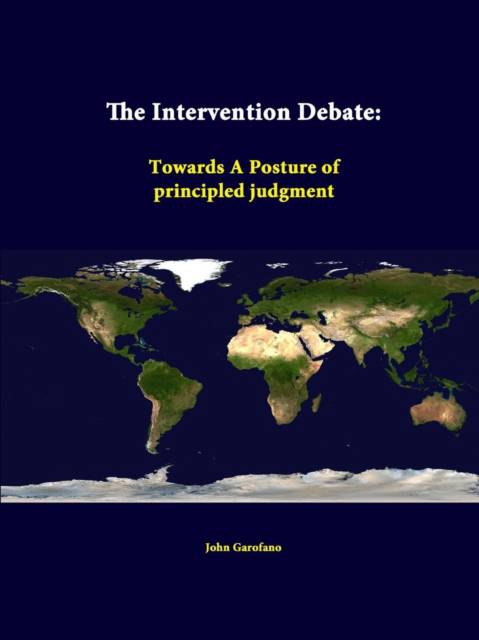
- Afhalen na 1 uur in een winkel met voorraad
- Gratis thuislevering in België vanaf € 30
- Ruim aanbod met 7 miljoen producten
- Afhalen na 1 uur in een winkel met voorraad
- Gratis thuislevering in België vanaf € 30
- Ruim aanbod met 7 miljoen producten
Zoeken
The Intervention Debate
Towards A Posture of principled judgment
John Garofano, Strategic Studies Institute
Paperback | Engels
€ 25,95
+ 51 punten
Omschrijving
Deciding when and how to use force is one of the central elements of strategy. Throughout American history, debate has raged over whether force is appropriate only in defense of the homeland and vital national interests or whether it should also be used to promote more expansive objectives like regional security and stopping humanitarian disasters in regions with few tangible U.S. interests. The 1990s showed the extremes of this issue. In the George H. Bush administration, Secretary of Defense Caspar Weinberger and Chairman of the Joint Chiefs of Staff Colin Powell both advocated restrictive conditions for the use of force, with tangible interests at stake, clear support from the American people and Congress, and an explicit exit strategy. In the Clinton administration, officials such as National Security Advisor Anthony Lake and Secretary of State Madeleine Albright supported a more expansive use of force in places like the Balkans.
Specificaties
Betrokkenen
- Auteur(s):
- Uitgeverij:
Inhoud
- Aantal bladzijden:
- 96
- Taal:
- Engels
Eigenschappen
- Productcode (EAN):
- 9781312348097
- Verschijningsdatum:
- 11/07/2014
- Uitvoering:
- Paperback
- Formaat:
- Trade paperback (VS)
- Afmetingen:
- 216 mm x 279 mm
- Gewicht:
- 244 g

Alleen bij Standaard Boekhandel
+ 51 punten op je klantenkaart van Standaard Boekhandel
Beoordelingen
We publiceren alleen reviews die voldoen aan de voorwaarden voor reviews. Bekijk onze voorwaarden voor reviews.











